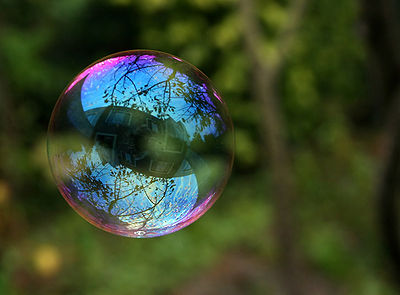Wikimedia Commons Pictures of the Year

Wikimedia Commons is one of those web resources everybody should be aware of. It’s an archive of sounds, animations, and images that are available for your reuse under some sort of Creative Commons licencing (or are public domain). Among other things, you find the images embedded in Wikipedia here.
A link from Boing Boing led me to the 2008 Wikimedia Commons picture of the year. There are quite a number of pictures selected out on that page. To be sure the highest voted pictures are great, but my two favorites were not the top two images.
One was the one I’ve included here— but, of course, it’s an image I’m already familiar with, and one that could be described by the title of this blog! It’s the famous Whirlpool Galaxy, known to amateur astronomers as M51 and to professional astronomers by any number of catalog names (although usually as M51). The galaxy has very strong, very well-defined spiral arms, making it a classic “grand design” spiral. The fact that the spiral arms are so well-defiend is probably as a result of the interaction with the smaller galaxy that’s off to the right in the image. A self-gravitating, rotating disk naturally rings in a spiral density wave pattern when you disturb it, just like the smooth surface of water “rings” in concentric circular waves to a point disturbance (e.g. throwing a rock into the water), or in parallel ripple waves to a plane disturbance (e.g. a steady wind blowing across the water). (You’re probably more familiar with the term “ringing” when applied to the vibrations that occur in a bell when it is disturbed.) The gravitational interaction with the companion galaxy is almost certainly the disturbance causing such a well-defined spiral pattern in the primary galaxy. This particular image of M51 was taken with the Hubble Space Telescope.
I think my favorite image of the set, though, is Reflection in a soap bubble. It’s a beautiful photograph, and it has a sort of Escheresque quality to it. (Exploring the geometry of these sorts of reflections was the sort of thing Escher loved to do.) This is a photograph by Mila Zinkova, and is available under the GNU Free Documentation License. (I don’t believe that I need to make this post available under the GNU FDL simply by including the image, but I could be wrong.)


June 3rd, 2009 at 12:11 pm
The GNU Free Documentation License does require you to license your post under the GNU FDL (i.e. it has a “share-alike” requirement). You’re even supposed to include the full text of the license (not just a link to it).
The GNU FDL was intended for documentation and textbooks, which is why it has requirements that seem onerous for things like images. That’s why Wikipedia has been going through a long process to get its text dual-licensed under both a GNU FDL and a Creative Commons CC-BY license.
June 3rd, 2009 at 12:27 pm
Yikes… that’s a pretty cumbersome license for an image then.
Well, I’m going to duck under the “almost fair use, nobody will notice” standard that most blogs use when including images found on the net (which you see all over the place without attributions or the real copyright terms or any such — really, more evidence that our copyright laws and the strict terms of fair use are out of sync with common practice today).
June 12th, 2009 at 7:05 am
Sounds a bit cumbersome, but there’s likely a workabout. Blowup Image Page could have the liscense in a frame, or something.
BTW, I could put the stars themselves in your hands, but it’s really a technique for those who attend to they of distant hearts. It should be a good economic remedy, descending from Dagda’s Cauldron, but needs a flavoring, to get over the disinteresting parts. The complexities of the Creative Commons would derive from a history of Intellectual Property, and you’d really have to examine the hymns of Agni, whose wife invented History, one day. My Cauldron of Stars would help, in discussing the circumstance of all earthly affair.
How to bring the people of Second Life to the Stars is a challenge, that might not even be relevant, but I’m about to start with Qavimator, to model the Hand Clapping Game, which Scientologists should be learning from their children.
Arawn Graalrd